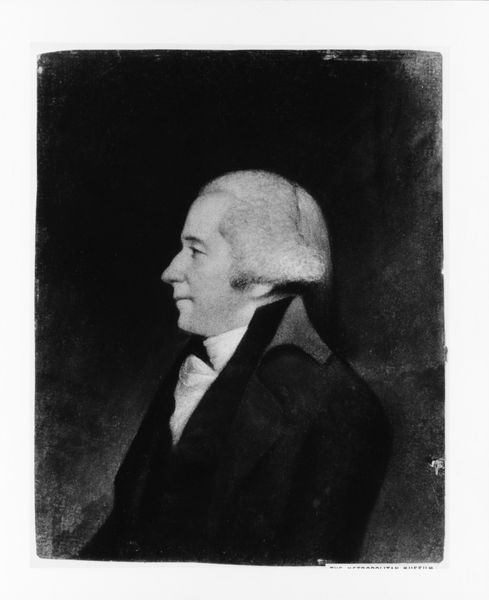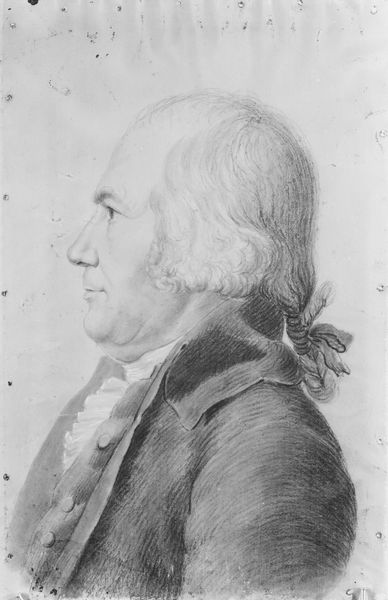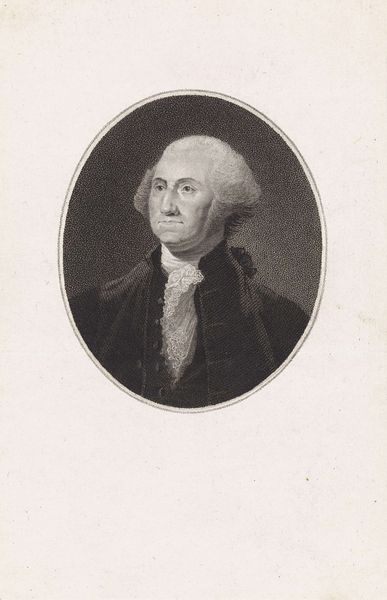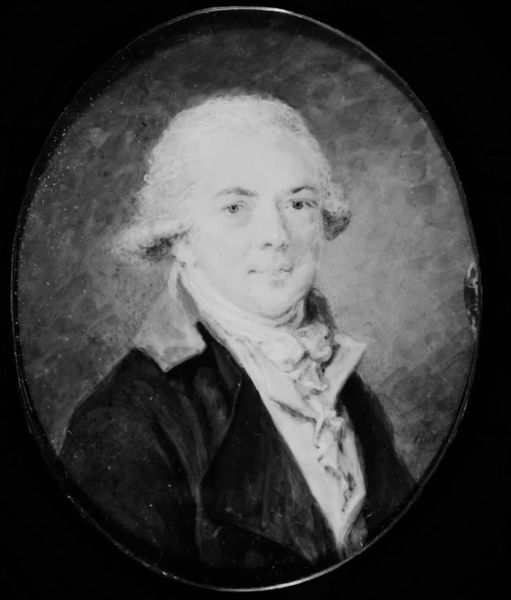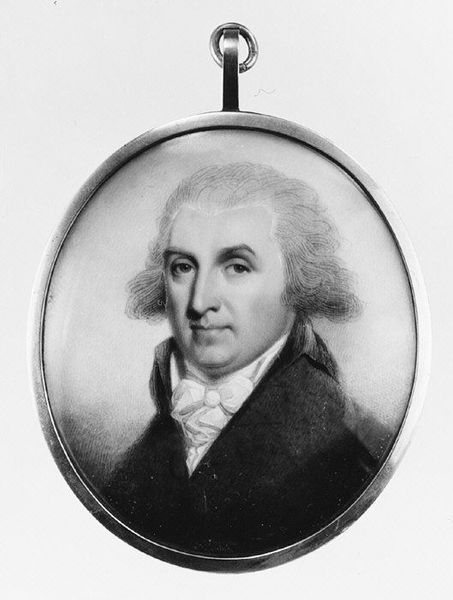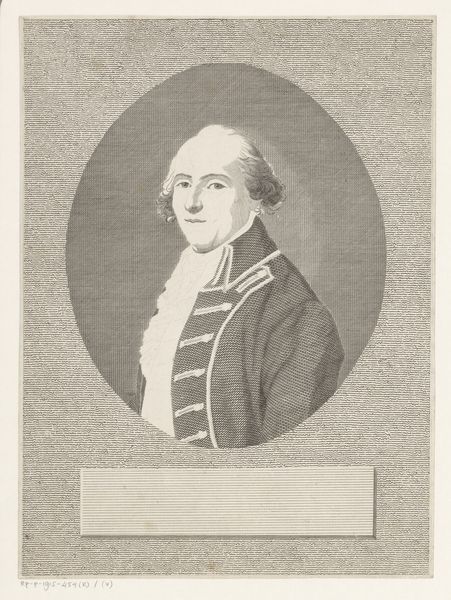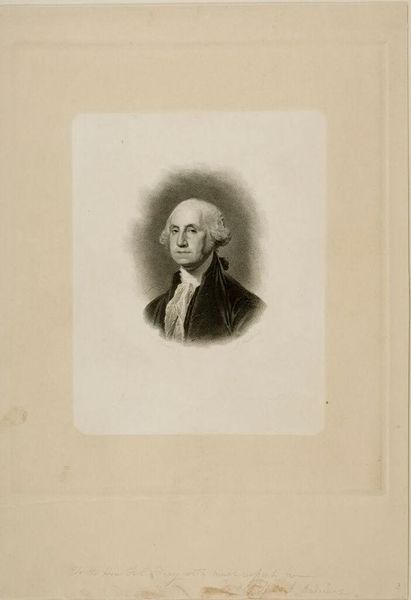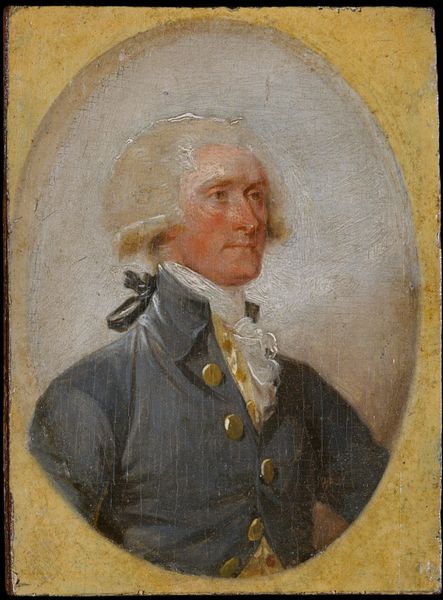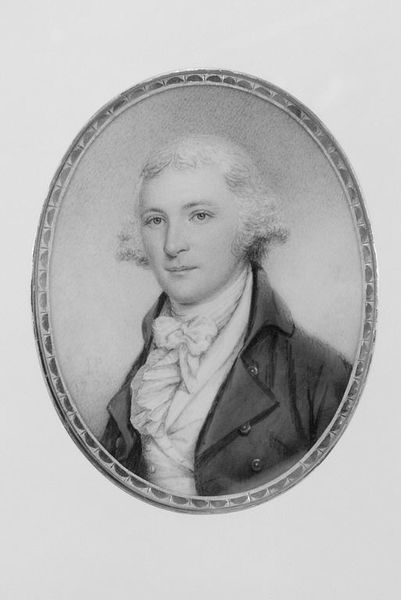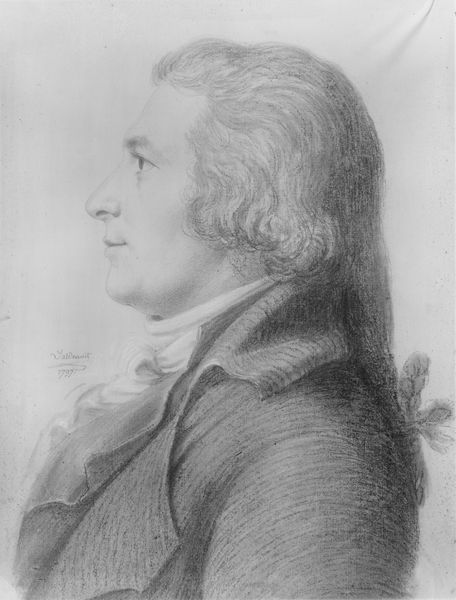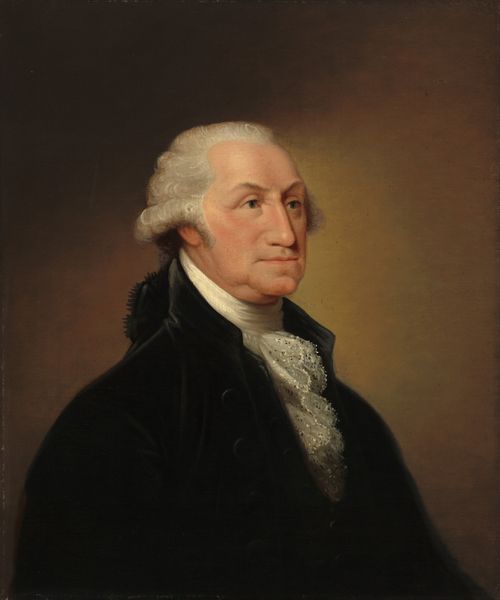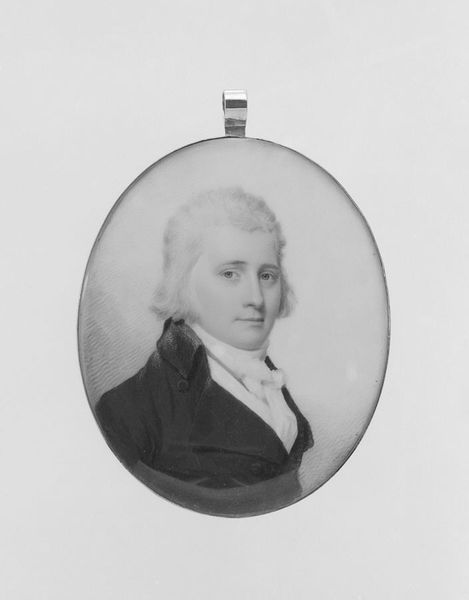
painting, oil-paint
#
portrait
#
neoclacissism
#
painting
#
oil-paint
#
academic-art
Dimensions: 30 x 25 in. (76.2 x 63.5 cm)
Copyright: Public Domain
Curator: Gilbert Stuart’s oil painting, "Thomas Smith," created between 1785 and 1787. The work is currently held at the Metropolitan Museum of Art. Editor: A man seemingly lost in thought. The somber shades suggest perhaps a gravitas, the weight of civic responsibility etched on his face, while that stark white wig against the dark backdrop just *pops*. Curator: It's an interesting interplay of dark and light, quite typical for Neoclassical portraiture, isn't it? The way Stuart utilizes the chiaroscuro effect not only models Smith's features, providing depth and volume, but also directs our attention to his expression. Semiotically speaking, light represents enlightenment, knowledge, and, in this context, perhaps his elevated social status. Editor: Absolutely. The high contrast underscores the sitter's importance within the painting's space and, more broadly, in society at the time. I see Stuart engaging with a well-established visual language, creating a sort of timeless authority through established portrait conventions. The plain background draws all the more attention to Smith, as an individual, but what was his role in society? Curator: Smith served as the Collector of Customs for the port of New York. This position certainly played a role in the overall presentation here. The formality, almost severity, underscores his status. The dark clothing speaks to a certain mode of dress and sobriety of attitude, aligning him visually with other prominent figures of the era, lending him legitimacy through representation. Editor: It's amazing how an image from over two centuries ago can still evoke a specific power dynamic. Consider, for example, how this work was probably displayed – likely in a space designed to impress. Looking at it today within the museum, one has to acknowledge its contribution to solidifying Smith's legacy but also its ongoing effect on shaping our view of eighteenth-century elites. The pose, costume, color - all read "power." Curator: Precisely. The overall composition creates a visual dialogue that echoes societal power structures and codes. Focusing on these formal aspects opens the piece to greater comprehension. Editor: I’m left pondering on the role artworks like this portrait played in promoting and perpetuating societal order. And you? Curator: The way the work balances light and dark continues to capture my interest as it represents far more than it initially displays.
Comments
No comments
Be the first to comment and join the conversation on the ultimate creative platform.
